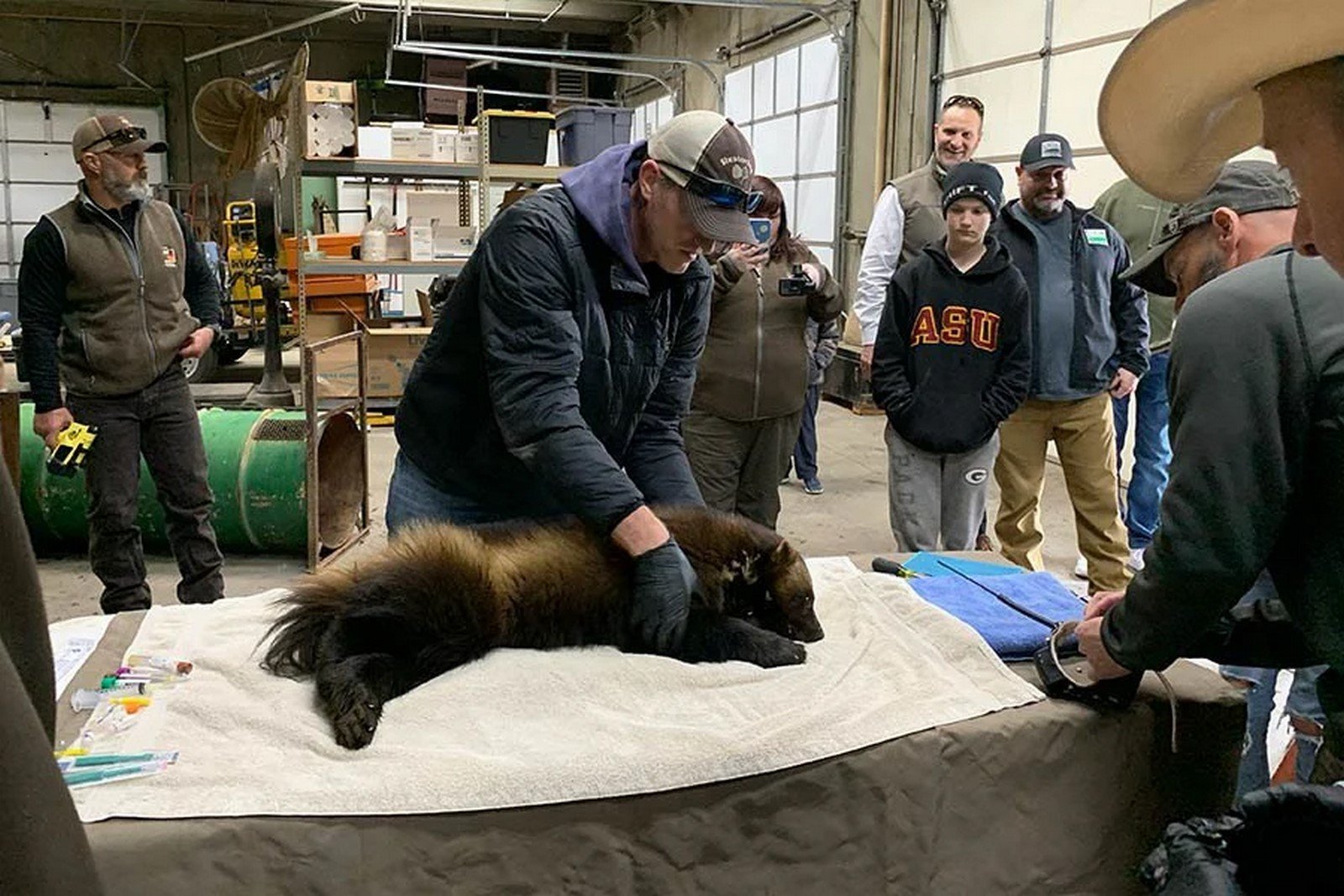In a “once-in-a-lifetime experience,” Utah state wildlife authorities were able to capture a wolverine, sedate and examine it, and fix a GPS tracking collar to learn more about the elusive creature.
After sighting a wolverine from the air on March 10th in Randolph, about two-and-a-half hours northeast of Salt Lake City, a biologist from the Utah Division of Wildlife Resources (DWR) set out a pair of barrel-shaped traps baited with the hind quarters of a sheep with the help of an experienced trapper, to catch the animal.
“It’s amazing to get a chance to see a wolverine in the wild, let alone catch one,” DWR Northern Region Wildlife Manager Jim Christensen said in a statement. “This was a once-in-a-lifetime experience.”
The animal was feeding on a sheep it had killed earlier that morning, and the team put together to try and catch it hoped it would return the day after.
“There was so much activity in the area that morning, I thought the wolverine would be long gone, and we wouldn’t be able to catch it,” Christensen said.
Weighing 28 pounds, the individual was determined to be a male between the ages of 3-4. Officials affixed a GPS collar and then released it into the Uinta Mountains.
The elusive glutton
Gulo gulo, the wolverine’s scientific name is the root of the English word “glutton”. The sheep it had been feeding on in the Randolph hills was just one of eighteen it had killed and eaten.
It’s also known as the Indian (Native American) Devil, and is famous for being comedically ornery, able to eat way more compared to its body weight than other predators, and for getting into scraps with wolves and bears, despite the fact it tends to be a bantamweight in comparison.
Merely 8 sightings have been recorded in Utah since 1979, but they’ve been growing more regular. Four of those sightings occurred within the last 8 years, including a carcass and another individual in 2014, some tracks in 2018, and a major sighting last year when a wolverine was seen running across Antelope Island State Park.
Montana, Idaho, and Wyoming all have small populations of wolverine, but the largely nocturnal, constantly mobile mammals are difficult to assess. They can roam 15 miles a day in search of food, and have home ranges of 350 square miles.
Utah is at the very southern edge of their range, as snow is a heavy influence on their survival. They need snow to tire animals out they are hunting, as well as to make their dens, and to store carcasses they haven’t finished eating.
“Having a collar on this wolverine will teach us things about wolverines in Utah that would be impossible to learn any other way,” Christensen said. “Four different wolverine sightings were confirmed in Utah in 2021. Were we seeing the same animal or different animals last year? Having a collar on this animal will help us solve that riddle”. WaL
PICTURED ABOVE: Biologists inspect the wolverine caught near Randolph, Utah. PC: Utah Division of Wildlife Resources.
If you think the stories you’ve just read were worth a few dollars, consider donating here to our modest $500-a-year administration costs.



